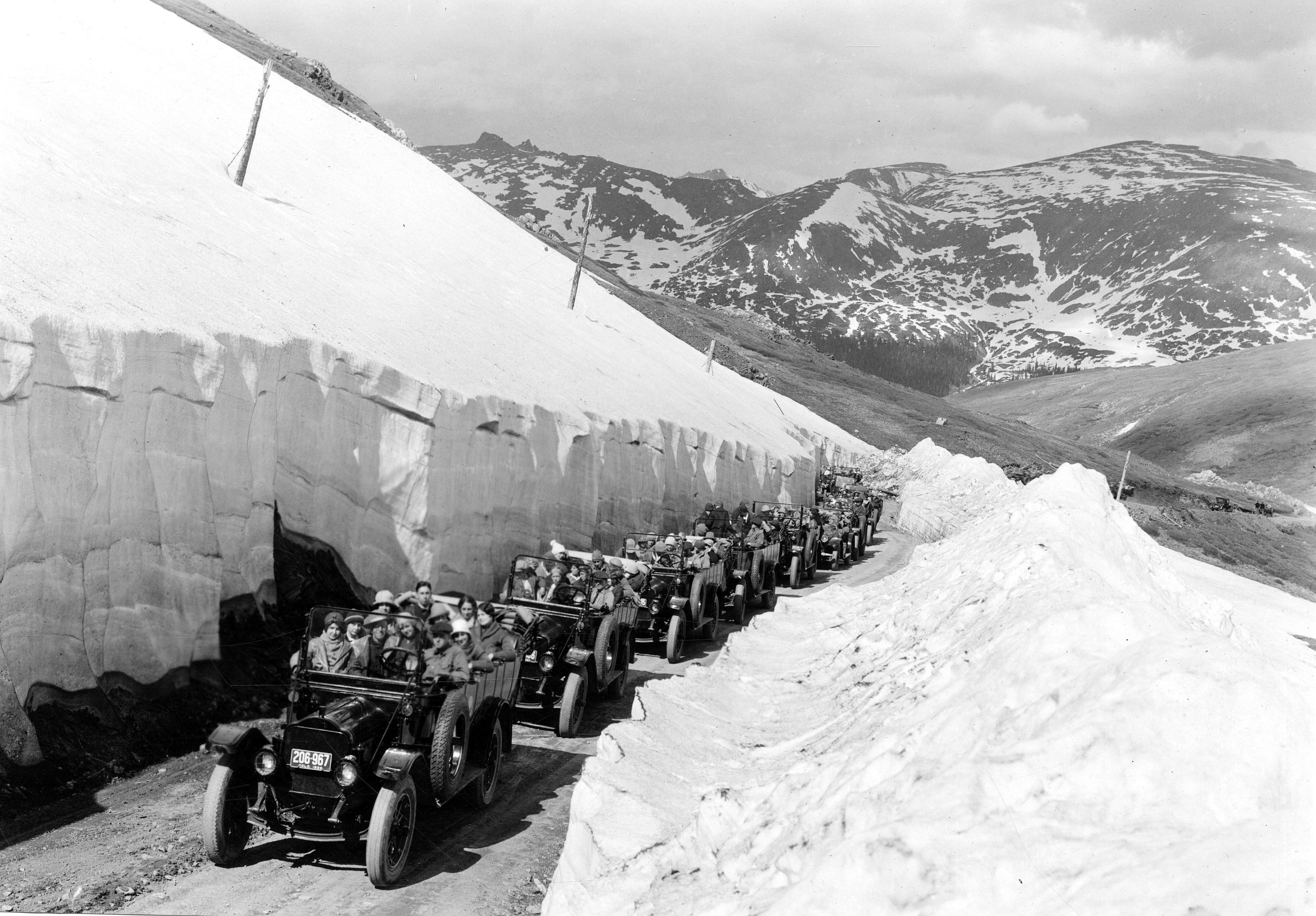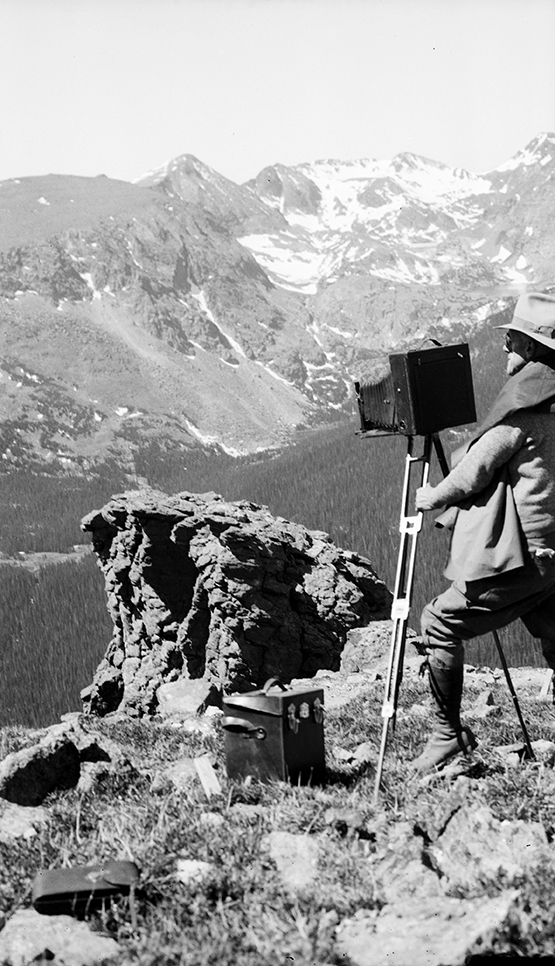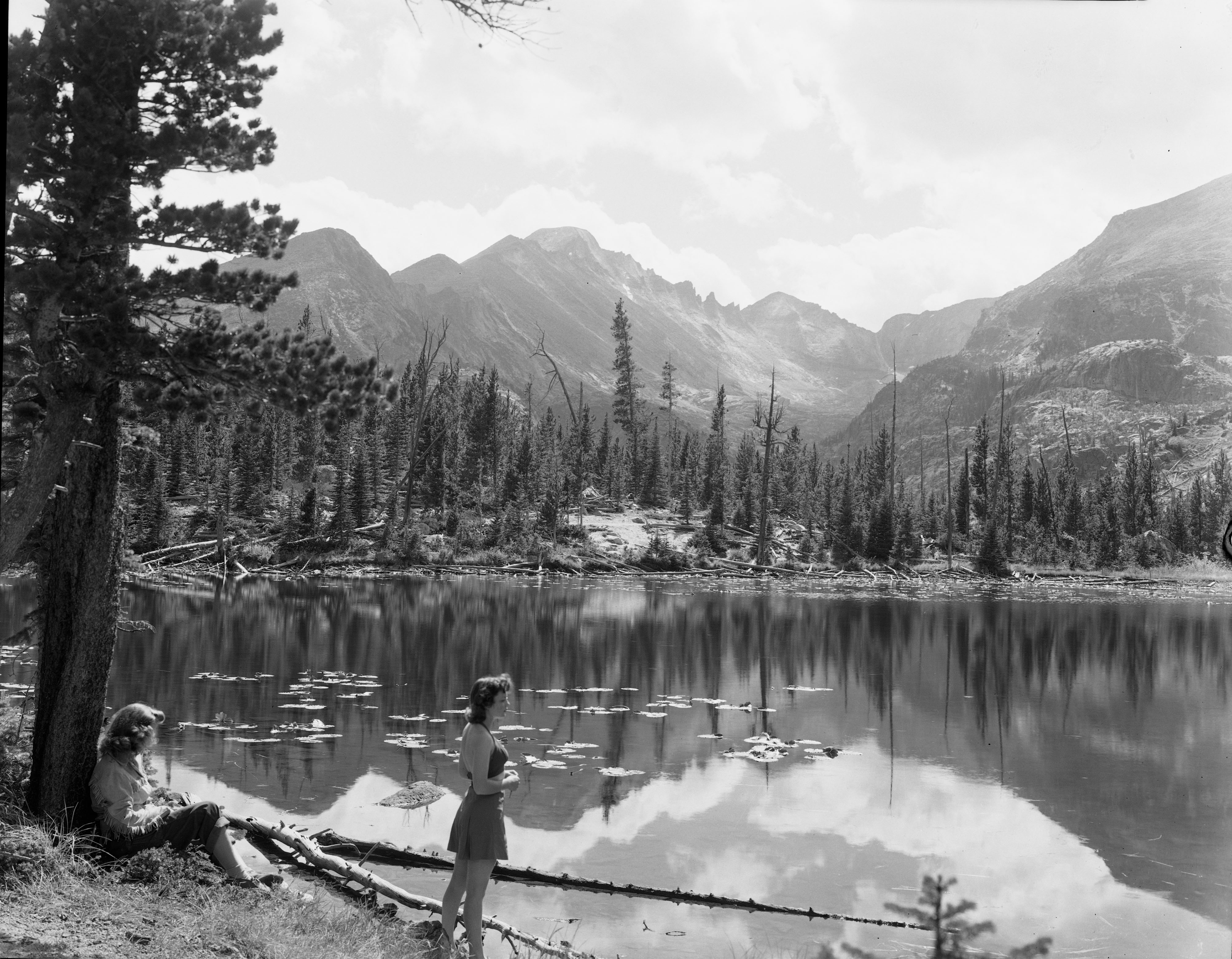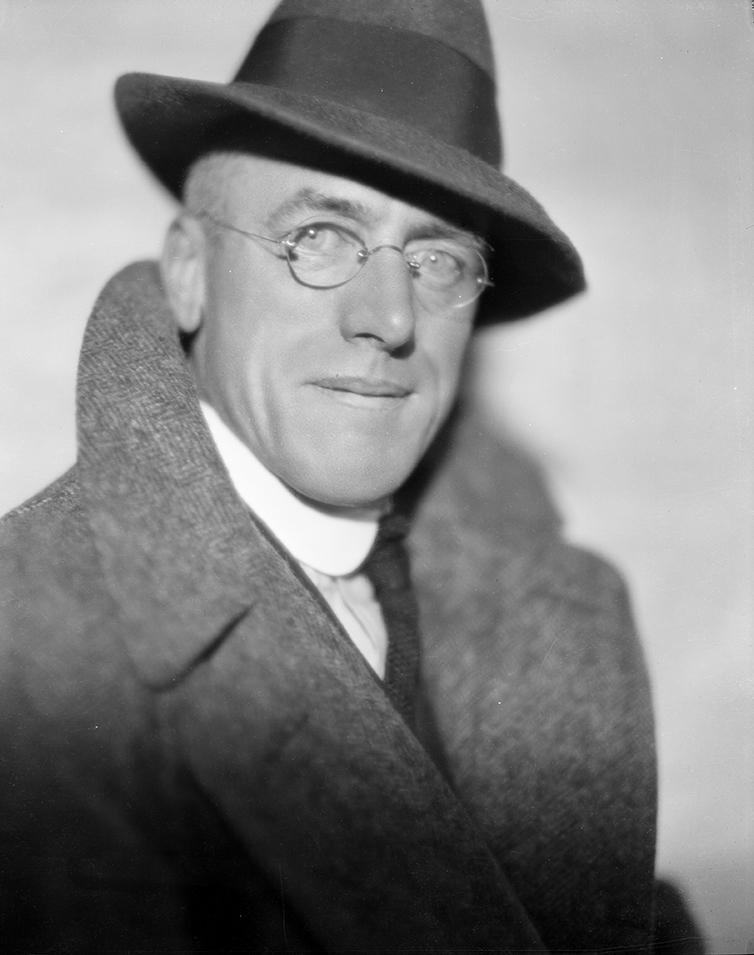Story
Introducing the Fred Payne Clatworthy Collection
With the Aultman Studio collection finished, I’m happy to announce that we’ve begun work on the Fred Payne Clatworthy collection, the final set of material up for processing under our NHPRC 20th Century Photograph Collections Grant Project. The collection features the beautiful work of Frederick Payne Clatworthy, a photographer internationally recognized for his mastery of the autochrome (a rare, early form of color photography).
Clatworthy was born in Dayton, Ohio in 1875. An inquisitive young man with many interests, Clatworthy purchased his first camera around the age of 13. He began to make blue print photographs (cyanotypes) and sold them to family members and the occasional stranger. Although he studied both law and medicine during his formal education, Clatworthy’s interest in photography persisted. He continued to shoot photographs throughout his teenage and young adult years.

Two people pose in cave at Hawlett (Rowe) Glacier in Rocky Mountain National Park, Fred Clatworthy,1910, Accession number: 99.164.53
Clatworthy first visited Colorado during a cross-country bicycle trek that took place over a year between 1898 and 1899. Clatworthy left Evanston, Illinois in June of 1898 and bicycled nearly 1000 miles to Denver. He then continued on to New Mexico, Arizona, California, and Washington, snapping photographs the along the way. Clatworthy eventually returned to Colorado in 1902 and settled in Estes Park around 1904. There, he opened a curio store called “Ye Lyttel Shop.” The store sold a variety of items including furniture, produce, Kodak cameras, film, and Clatworthy’s own images of the area. In the coming years, Clatworthy would develop additional business interests in the area including rental cottages, a Kodak store, and for a time, even a zippy laundry service. He would eventually marry and raise his family in Estes Park, residing in the town until his death in 1953.

A line of automobiles on Fall River Road in Rocky Mountain National Park, Fred Clatworthy, circa 1925, Accession number: 99.164.1437
Photography remained a constant throughout Clatworthy’s life. In 1900, he sold a series of Grand Canyon images to the Atchison, Topeka, and Sante Fe Railroad Company,and began a long relationship with the American railroads. By the end of his career, Clatworthy could count the Great Northern, the Union Pacific, the Southern Pacific, the Denver and Rio Grande, and the Chicago, Burlington, and Quincy Railroad among his clients. In 1914, Clatworthy began to produce autochromes, increasing the demand for his services. Developed in France, the autochrome consisted of a glass plate covered with a silver emulsion and tiny grains of potato starch dyed red, blue, and green. Each grain acted as a small filter permitting the corresponding colored light to pass through it at the time of exposure. The end result was an image that more or less faithfully reproduced the colors of nature. Excited by the advertising potential of full-color photographs, railways and transportation companies began sponsor Clatworthy’s travel to locations near and far. For instance, the Great Northern Railroad sent Clatworthy to Glacier National Park in 1925, and the Matson Navigation and Union Steamship Companies sent Clatworthy to New Zealand and Tahiti in 1928.

Clatworthy with camera on Trail Ridge Road in Rocky Mountain National Park, circa 1920, Accession number: 99.164.8
Clatworthy’s autochromes not only afforded him the chance to travel but also gained him international notability. In 1917, he presented autochromes of Estes Park and Rocky Mountain National Park (RMNP) before members of the U.S. Congress. Held at the Smithsonian Institution in Washington D.C., Clatworthy’s exhibition was part of an effort headed by Colorado senator John F. Shafroth to increase the area of RMNP. The senate passed Shafroth’s bill, which had been stalled for the past year, the day after Clatworthy’s presentation. It was also around this eventful time that Clatworthy became acquainted with the National Geographic Society. Approximately 100 of his autochromes would appear in the pages of National Geographic Magazine between 1923 and 1934. Finally, this 1917 trip also marked the beginning of Clatworthy’s career as a slide lecturer. For the next 17 years, Clatworthy would spend his off-seasons presenting his autochromes at packed venues throughout the country. Clatwothy’s most notable lecture venues included the Field Museum, the American Museum of Natural History, and Carnegie museum, but he was also happy to give his lecture in front of any type of organization that was interested. Between Clatworthy’s lectures and published images, his work was seen by over ten million people in over 160 countries.

Two women on the bank of Nymph Lake in Rocky Mountain National Park, Fred Clatworthy, 1949, Accession number: 99.164.621
The Frederick Payne Clatworthy collection at History Colorado includes manuscripts, black and white photographic materials, and approximately 1000 of Clatworthy’s autochrome plates. Although the autochrome images do not accompany this post, many will be digitized and added to our online collections by the end of June, 2017.
Can’t wait? Approximately 180 of Clatworthy’s black and white images of RMNP are already digitized and available on History Colorado’s Online Collections!

